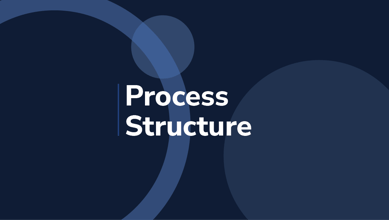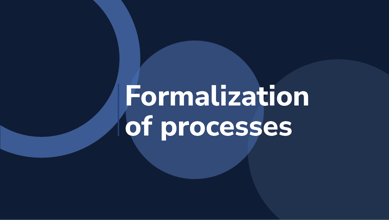Logistics
Everything you need to know about the Logistics area of a company.
Introduction
In a company, there are many coexisting functional areas that make business work properly: management, finances, administration, production/operations, quality, marketing, human resources, project management, process, logistics. In order to reach its organizational objectives, it is vital that all these areas have the same purpose and business strategy.
Next, we are going to delve into the Logistics area: what is it, which are its main functions, its biggest challenges, etc.
What will you find on this page?
What is the Logistics area of a company?
Delve deeper into our
Business Concepts

What is a macro process?

Process structure

Formalization of processes
A short history of its conception and development over time
Functions of the Logistics area of a company
-
Customer service. Thanks to Logistics, the sales area can manage the products or services according to the needs of the customers to speed up time and response.
-
More adequate designing and planning of the transportation routes as well as the mode and medium that can be used to deliver the products to the customer.
-
Controlling inventories. Storing both raw materials and half-finished products; it means to have a thorough stock control.
- Processing of orders. Good stock management and planning allow you to process orders more quickly so that you can satisfy your customers' demands more efficiently.
- Information management. It allows you to know your product and storage system better. You can get a lot of information regarding requests, great order concentration times, error detection, etc.
- Order monitoring. The most important part if we talk about transportation will be traceability management of orders; that is to say, you have to pay attention to the localization and control (in real-time, if possible) of the order, for which you need to monitor it by using special applications.
All these functions are carried out to provide excellent customer service with a minimum cost for the company.
logistics: connects people, products and processes to ensure everything gets where it needs to, when it needs to.
Logistics in organizations
Structure of the area
The comprehensive logistics of a company is made up of both internal and external logistics. Both parts work together to assure the connection between the internal processes of supplies of the company and the external ones.
While one of them is in charge of the reception, movement, and supply of the goods internally, the other one deals with the communication with the customer to guarantee excellent service.
Specification: internal and external logistics
-
Receipt. Every company receives goods in an initial state so the area must have the necessary resources for this: facilities, equipment, staff, and specialized software to deal with the storage of information, bookkeeping, and monitoring of the products.
-
Location. Location is not just about filling shelves with goods but about distributing them among other supply points. It is also necessary to study the location of the stored materials to facilitate their movement. If a product needs rotation, it would need to be more accessible (i.e. it would have to be located in the nearest halls, placed at a low height, having no other elements in front of it, etc.)
-
Value increase. Here we find all the processes that add value to the company, such as real-time stock management which adds more value than storage. For material handling, we should also acquire specialized equipment such as radiofrequency devices to scan products.
-
Assuring good storage of finished products and adequate stock management.
-
Being responsible for the correct rotation of products (thus, with adequate thorough planning in the supply chain) and correct delivery of products.
-
Achieving efficient distribution of "reverse logistics". The distribution and returning of goods allow you to be in direct contact with your customer, so their strategic importance is key. This depends on correct management and execution of the delivery of products and even of adequate route planning, among other things. For instance, when a customer complains, the company should work to replace the faulty product immediately.
Problems and challenges it has to face
Tips to design a comprehensive logistics area in a company
Delves into the relationship between logistics and business
What do we do in Drew?
We believe that clear processes, supported by the right technology, create an environment where people work happier, and thus make your company more productive.Supplementary material
Resources and editorial content
Practical resources on the main challenges and solutions that every company has.
Logistics sessions
Meetings dedicated to particularize different problems that transit the current organizations.
Conclusion
Logistics is considered to be a key part of companies' success, that is why new global companies based their success on the improvement of their supply chain. This overview and history of logistics show us two things: first, the importance that logistics has had and will continue to have in our world, and second, the close relationship between its development and the creation of new technologies.
As quality and development indicators are improved in a company, it is possible that logistics strategies are improved as well. Today, new software tools allow you to unify all the information regarding the quantification of raw material, its movement, the quantity and quality of orders, etc. This facilitates the solutions for every problem the area can have since we have more and more agile devices to assure the success of companies.
%20(1).jpg?width=300&name=wp9131686%20(1)%20(1).jpg)
